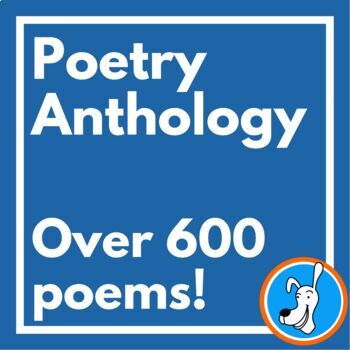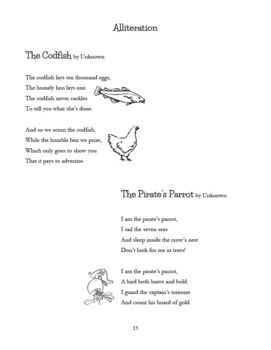Poems for Kids: Over 600 poems for teaching poetry terms & poetic devices
- Zip
Description
If you're teaching a poetry unit in grades 3-6, you need poems...lots and lots of exemplar poems!
Need poems for teaching similes? Metaphors? Personification? How about haiku or narrative poems? From rhyming poetry to free verse, this anthology collection has them all (with picture support) to make it completely painless to teach the elements of poetry to students of all abilities in grades 3-6. So if you're a teacher who likes to teach poetry lessons by example, there are more than 600 poems to share!
**Check out the VIDEO PREVIEW above for a small sample of this resource, to give you an idea if it will help meet your teaching needs.
(Expand to full screen for best viewing.)
This HUGE digital poetry resource makes it easy and convenient to teach a poetry unit by SHOWING your students targeted poems containing:
- Alliteration
- Allusion
- Anaphora
- Assonance
- Consonance
- Creative or "Poetic" License
- Elegy
- Epitaph
- Eye Rhyme
- Fable Poems
- Haiku
- Hyperbole
- Inference
- Imagery
- Internal Rhyme
- Metaphors
- Meter
- Mood and Tone
- Narrative Poems
- Near Rhyme
- Nonsense Poem
- Onomatopoeia
- Personification
- Point of View
- Puns
- Refrain
- Repetition
- Rhyme
- Rhyme Schemes
- Rhythm
- Similes
- Stanzas & Lines
- and more!
Bonus: Poetry Assessment Quizzes
- Three short poems with Questions (and Answer Key!)
2021 Update: This anthology has grown from 140 poems (71 pages) to a whopping 600 poems (376 pages)! If you're teaching an intro to poetry, can you really have enough exemplar poems? I say, no way!
Before your students are ready to start writing poetry, they need to read some poems containing the rich vocabulary and figurative language of other poets. In this collection, many classic poems are included. Here are just some of the poets featured:
Robert Frost, Rudyard Kipling, Paul Laurence Dunbar, Lewis Carroll, Edward Lear, William Blake, Ralph Waldo Emerson, Emily Dickinson, Robert Louis Stevenson, Alfred Lord Tennyson, Sara Teasdale, Langston Hughes, William Blake, Carl Sandburg, and many more...
Who is this anthology of poems best suited for?
This collection of poems is ideal for those teaching a poetry unit, poetry analysis, or the elements of poetry, but it's also quite handy for test-prep before high stakes testing and during National Poetry Month in April. It's ideal for grades 3-6.
This collection has just been expanded to include even more poems for teaching poetry terms & poetic devices, but short poems make a great teaching text throughout the school year. To make locating them easier, the collection now includes a:
- Title Index
- First Lines Index
- Author Index
If you like this targeted collection of poems, you might also like:
Let Poems for Kids help you teach smarter, not harder!
Lorrie L. Birchall
Cool Teaching Stuff





